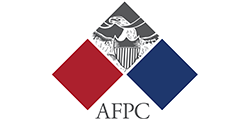
BACKGROUND: On December 12, 2022, the leaders of Turkey, Turkmenistan and Azerbaijan signed five agreements to increase cooperation in the areas of trade, economy and energy. This agreement was added to the hundreds of bilateral and multilateral agreements – many of which have remained on paper – signed by Turkey and the Central Asian countries during the course of three decades since the demise of the Soviet Union.
Eager to get these Turkic republics out of the Russian orbit, Turkey pursued an ambitious strategy to establish the legal infrastructure for increased cooperation at bilateral and multilateral levels. However, the web of economic transaction channels that had been established during the Soviet era proved difficult for Turkey to untangle. Furthermore, as these newly independent republics were in a transition period to set up their own system of governance, they were vulnerable to Russian countermoves. Most, if not all, were unenthusiastic about distancing themselves from Moscow, fearing that a speedy exit from its orbit would attract Russia’s wrath.
This is why it took nearly two decades for the process that Turkey initiated in 1992 to bring the Turkic-speaking former Soviet Republics from Caucasus and Central Asia under an organizational framework to become institutionalized. In 2009 the Cooperation Council of Turkic Speaking States was formed. And it took more than a decade, until 2021, before the Council was renamed the Organization of Turkic States (OTS). Parallel to the slow pace in the institutionalization process, the development of multilateral cooperation among the Turkic states remained far from fast. This may no longer be the case, however, as Russia’s war in Ukraine is increasingly pushing Central Asian countries to look for alternative routes to access international markets. One such alternative is the Middle Corridor.
The genesis of the idea of the Middle Corridor dates to 2009 when Turkey and Armenia initiated a dialogue with a view to normalize their relations. As the Turkish government was looking for regional cooperation projects that would promote this normalization, it decided to expand the area of multilateral cooperation from the Caucasus to Central Asia, coining the term Middle Corridor. But the dialogue with Armenia ended, and Turkish efforts to promote the project met with little interest until the Russian aggression against Ukraine.
IMPLICATIONS: The war in Ukraine has caused severe disruptions in the Northern Corridor which connects China and Central Asia to Europe via Russian and Belarusian territory. Russia’s aggression has had not just economic but also politically chilling effects on Central Asian countries. Kazakh oil exports across Russia were interrupted at least four times in 2022. The disruption in July 2022 for instance was due to the “temporary closure” of the Novorossiysk oil terminal, which is key for exporting Kazakh oil. The decision by a Russian court citing “environmental concerns” came only two days after Kazakhstan's president told a visiting top European diplomat that his country is ready to export more oil to the EU. The closure was also attributed to Kazakhstan’s decision to refuse to recognize the “independence” of the Luhansk and Donetsk regions of Ukraine.
Not only does the Western sanctions regime create complications along the Northern Corridor, but the fear that they may one day face the same fate as Ukraine also pushes the Central Asian countries to decrease their dependence on Russia. The fact that Iran is set to remain under Western sanctions disqualifies the Southern Corridor as an alternative. This explains the increased interest since last year for the Middle Corridor, also known as the Trans-Caspian International Transport Route (T.I.T.R.). The interest of the Central Asian states in the Middle Corridor was kindled by the Russian annexation of Crimea in 2014 and the sanctions that were subsequently applied by the West. Despite Turkey’s initial failure to promote this network of roads, railways, pipelines and ship routes, the Middle Corridor has seen some modest but nonetheless solid progress. The completion of Trans-Kazakhstan railroad (2014), the Baku–Tbilisi–Kars (BTK) railway (2017) and the Marmaray tunnel in Istanbul (2013) are major achievements along the route of the Middle Corridor. The Organization of Turkic States (OTS) should also be given credit; Turkish officials never gave up on pushing tirelessly to foster regional collaboration. A decade ago it would have taken years for a very simple generic agreement on transportation to be signed by OTS members, whereas there is now a determination to render the Middle Corridor functioning as well more attractive. This is needed as transportation via the Middle Corridor is more expensive due to longer waiting periods and high customs fees as the route crosses several countries. The lack of infrastructure in key ports and railroads remains another handicap of the Middle Corridor.
Yet 2022 has seen intensified efforts on bilateral as well as multilateral levels to make the Middle Corridor more attractive by reducing bureaucracy and harmonizing legislation. In March 2022 Azerbaijan, Kazakhstan and Georgia agreed to establish a joint venture to develop the TITR by addressing the issues of tariff setting, cargo declaration, and the use of unified IT solutions. In June 2022 the heads of the OTS’s Customs Service met in Kyrgyzstan for their eighth meeting, discussing the creation of a simplified customs corridor, while foreign and transport ministers from Turkey, Azerbaijan and Kazakhstan met in Baku for their first tripartite meeting.
In August 2022 the foreign, economy, and transport ministers of Turkey, Azerbaijan and Uzbekistan gathered in Tashkent to establish a new format of dialogue and cooperation. Several other meetings can be added to this list. Efforts to develop the Middle Corridor have already begun to yield significant results as the volume of freight transportation via this route increased by 101 percent in 2021 compared to the previous year.
CONCLUSIONS: While it was fear of Russia that prevented the Central Asian countries from showing an interest in the Middle Corridor, it is ironically the same Russian factor that has today led to the reinvigoration of this alternative to the Northern Corridor. Kazakhstan, Uzbekistan and Turkmenistan are showing an unprecedented interest. However, crucially, the future of the Middle Corridor also depends on European interest. The European Union as well as key European capitals will have to assume a more active role.
It’s worth recalling that Turkey had been promoting the idea of connecting Europe and Central Asia long before China in 2013 launched the Belt and Road Initiative. However, the idea was met with skepticism in European capitals in the early 2010s. Only belatedly, and after the Russian invasion of Ukraine, has the EU begun to display a sustained interest in the Caucasus and Central Asia. In her visit to Baku in July 2022, the President of the European Commission Ursula von der Leyen pointed out that the EU is following the new developments around the Middle Corridor closely and she underlined that Brussels wants to work with Azerbaijan to build connections with Central Asia and beyond.
Indeed, boosting the transport capacity of the Middle Corridor was among the issues discussed in the first EU-Central Asia leaders’ meeting in Astana in October 2022. The European Bank for Reconstruction is giving priority to the Middle Corridor and is expected to release a report this spring which will serve as a guide for the European capitals.
However, the EU is unwilling to join forces with Turkey that has been spearheading the project for more than a decade. Turkey is at the center of the Middle Corridor; it occupies a central position not only in terms of geography, but also as a key economic and political power, indispensable for the realization of the project. Turkey has a customs union with the EU, and as Europe is a key trade partner Turkey has to a large extent internalized the Western standards of business. And it has three decades-long experience working with the Central Asian countries. These attributes make Turkey a natural ally of a European Union that is eager to explore alternatives to the Northern Corridor.
Yet the institutional-political relations between Turkey and the EU remain on ice and several European capitals opt to avoid intensifying cooperation with a regime they regard as increasingly authoritarian. Also, as Turkey has entered its electoral period, European decision makers do not want to provide added value to the relations with Ankara as this might serve the hand of President Recep Tayyip Erdoğan with whom they have a particularly turbulent relationship. Thus, European capitals are currently in a wait-and-see period.
Regardless of the outcome of the Turkish presidential election, the European capitals will have to review their stance and recognize that they need to join hands with Turkey to make Middle Corridor come to fruition. It is in the interest of the European Union that the Central Asian countries move out of the Russian orbit and are connected directly to European markets. This makes cooperation with Turkey, centrally placed along the Middle Corridor, indispensable for the EU.
Barçın Yinanç is a foreign policy commentator at the Turkish news site t24



